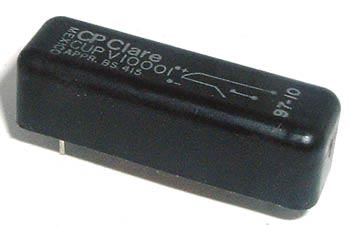Today’s industrial revolution is paced fast enough to require the safety of people and processes through protection systems. There are many types of electronic protection relays, and they are different from standard control relays. Being an essential element of industrial control engineering, it is impossible to conceive of machine control without relays. Traditionally, almost all relays have ON/OFF features. However, relay technology has advanced, and now protection relays can have more than the customary features.
For instance, protective relays can measure specific process variables like voltage and current and switch the output based on the measured values. On the other hand, control relays do not monitor anything. Rather, by detecting the presence of an electrical signal at their input terminal, they change their output contact state.
For integrating into a machine, it is necessary to specially wire protective relays. Control relays, being simple, do not require complex wiring.
In an industrial scenario, the main objective of protective relays is to prevent electrical and electronic systems from exposing any type of hazards. Control relays can only switch applications, like switching from one state to another, but they do not inherently protect from hazards.
Some protective relays can indicate the value of the variables they measure, such as current or voltage. However, control relays cannot do anything like that, only outputting the state change.
Many types of protective relays are available on the market. Their selection depends on the nature of the hazard from which the protection is desired.
For instance, an earth fault relay offers protection in a system where current is passing through an earth terminal. In a system, current passing through an earth terminal represents a significant fault in the wiring. It can damage not only the wiring but also the connected electronic and electrical components. The earth fault relay recognizes the current flowing through the earth terminal and protects the system from this hazard.
When the earth fault relay detects current flow through the earth terminal, it trips the connected circuit and sounds an alarm to protect the system from the hazard. To detect the current, it uses a current transformer connected to the earth terminal.
For instance, moisture can short the phase terminal to the earth terminal. This causes current to flow from the phase terminal to the earth terminal, creating an earth fault. On detecting such a current flow, the earth fault relay typically trips the circuit breaker, cutting off supply to the connected circuit. Simultaneously, the relay indicates the fault with the alarm flag. Medium to high-voltage applications typically use earth fault relays. These include substations, transformers, and distribution panels.
Voltage relays protect the system against voltage fluctuations. Two major voltage relay types are undervoltage and overvoltage relays. While overvoltage relays protect the connected system from voltage supply greater than a certain level, an undervoltage relay protects the system from voltage drops below a certain level.
This is necessary to protect equipment from the hazards of voltage supplies below and beyond the specified level damaging electronic and electrical components. Voltage relays are available for AC and DC systems, and voltage values range from 5 to 500 V.

